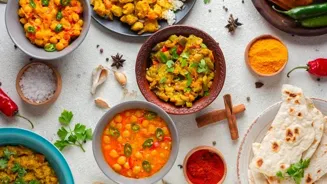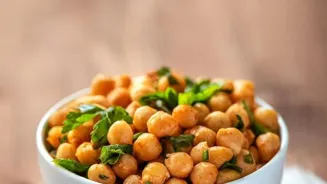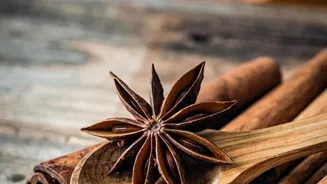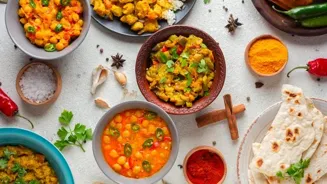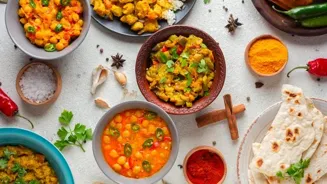Embark on a flavorful journey with Indian cooking. Learn about spices, tools, and tips for a successful class. Read more!
So, you've signed up for an Indian cooking class - bahot achha! (very good!). Get
ready to embark on a flavourful journey filled with aromatic spices, vibrant colours, and delicious dishes.
But before you tie your apron and grab your ladle, a little preparation can go a long way in ensuring you get the most out of your culinary adventure.
This isn't just about following recipes; it's about understanding the nuances of Indian cuisine and immersing yourself in its rich culinary heritage.
This article will guide you through what you need to know to prepare for your class, covering everything from understanding the basics of Indian spices to familiarising yourself with essential kitchen tools.
First things first
Understand the Spice Rack, the Heart of Indian Cooking. Indian food is all about spices – they are the foundation upon which the entire cuisine is built. Take some time to familiarise yourself with common Indian spices before your class.
We're talking about turmeric (haldi), cumin (jeera), coriander (dhania), cardamom (elaichi), and chili powder (mirchi). Knowing what they look, smell, and taste like will give you a head start. You can even find small sample packs of these spices at most Indian grocery stores.
Try smelling each spice and noting down the aromas. This will help you identify them quickly during class and appreciate the complexity they bring to each dish. Also, be aware that chili powder comes in various levels of heat, from mild Kashmiri chili to fiery bird's eye chili.
Asking about the spice levels during the class ensures you have more control. Finally, dont worry about memorizing recipes beforehand. Your instructor will guide you through each step. Instead, focus on building a foundational understanding of spices and their roles.
Ask questions, don't be shy in Indian cooking class
Secondly, come prepared to ask questions. Dont be shy! Indian cooking can sometimes seem intimidating, especially when dealing with unfamiliar ingredients and techniques. Your instructor is there to guide you, so don't hesitate to ask any questions that come to mind.
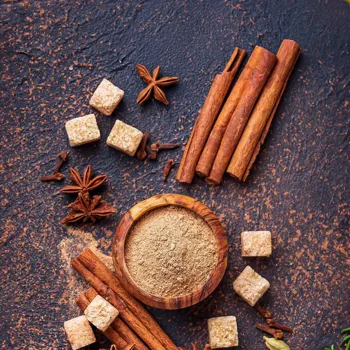
Whether it's about the best way to chop an onion, understanding the difference between garam masala and chaat masala, or clarifying a step in the recipe, no question is too small or silly. The more you ask, the more you'll learn and the more confident you'll become in your cooking skills.
Keep a small notebook handy, to jot down useful tips and answers provided by the instructor. This will be your personalized guide that you can refer to later. Also, it is beneficial to write down the meaning of some hindi words, such as "tadka", "bhuna", "dum" etc.
The more you learn about these words, the more you learn about the cooking process.
Essential kitchen tools for cooking Indian dishes
Now, let's discuss some basic kitchen tools. While advanced equipment is not a necessity, having a few essentials will make your experience smoother. A good quality knife is a must. This can be a chef's knife and a paring knife.
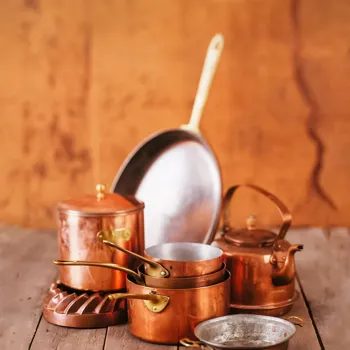
You'll be doing a lot of chopping and mincing, so make sure your knife is sharp and comfortable to hold. A heavy-bottomed pot or pan is ideal for cooking Indian dishes, as it distributes heat evenly and prevents food from scorching.
A kadhai, a wok-like pan, is also very useful for many Indian recipes. Additionally, you'll need measuring cups and spoons for accurate ingredient proportions, a cutting board for chopping ingredients, and a spatula or wooden spoon for stirring and mixing.
Many cooking classes will provide all the necessary tools, but you can also bring your own favorites just in case. Confirm with your instructor beforehand if you need to bring any tools.
Wear comfortable clothes, apron, tie hair, avoid loose clothing for Indian cooking class
Following that, wearing comfortable clothes is very important. You'll likely be standing for a good portion of the class, so wear comfortable shoes as well. An apron is a must to protect your clothes from any accidental spills or splatters.
It's also a good idea to tie your hair back to keep it out of your face and prevent it from falling into the food. Avoid wearing loose clothing that could get caught in the equipment or near the stovetop. Indian cooking can get a little messy, so it's best to dress accordingly.
Do not forget to bring all your belongings.
Taste, observe, learn Indian flavors in cooking class
Next important thing to do is to be ready to taste and learn. Indian cooking is heavily based on using your senses. Taste everything and observe everything. The essence of the cooking class is to learn the Indian flavours. The instructor provides demonstrations of recipes that will help you learn.
Learning a new dish requires understanding the role of each spice and how to incorporate it with the other ingredients. Tasting the dish at each stage of the cooking can help you understand the taste. This also gives you a greater understanding of which dish you can make.
Open mind for Indian cooking journey
Finally, remember to come with an open mind and a willingness to learn. Indian cooking is more than just following recipes. It's about understanding the culture, the history, and the traditions behind the food. Be open to trying new ingredients and flavors, and don't be afraid to experiment.
Embrace the process and enjoy the journey of discovering the world of Indian cuisine. Most importantly, have fun! Cooking should be a pleasurable experience, so try to relax and enjoy interacting with your cooking instructor. The more you relax, the more you learn and get the most out of the class.
With a little preparation and a whole lot of enthusiasm, you'll be well on your way to mastering the art of Indian cooking. Shubh kamnayein! (Good luck!).
AI Generated Content. Glance/InMobi shall have no liability for the content



